QuestionI just bought a cocker pup last weekend and he was supposed to be house broken. He is 15 weeks old and did well the first 3 days here. He was also supposed to have been de-wormed, but he still has them and we are treating them. Anyway, yesterday, for some reason he started pooping in the floor. He has not peed in the house yet, but if he keeps on, he will become an outside dog and that is not what I wanted. I already have an outside dog, this cocker was supposed to be for my children. Also, he nips alot, is this normal? We are trying to get him to stop and we tell him no and push him away, but he still bites my knee when I am walking and my feet when I am getting dressed for work. One more thing, sorry, if we get him fixed will he quit mounting peoples legs? This is very embarrassing and I want him to stop doing it, I did not initially want a male, but all that was left was males.
AnswerThe bowel movement in the house could be partly urgency from the worm medicine and a lack of attention on your part. At that age, you still need to keep a close eye on them and respond quickly. Use gates and doors to keep him in the same room as you. You may even want to crate him when nobody can watch him. That also solves any chewing problems.
It is only natural that a puppy resists its crate at first. What the puppy
wants more than anything else is to be others, you, anyone else in the
household, and any other pets. In our modern society, even if we are home,
other things distract us from the attention an uncrated puppy must have. The
only real solution is to crate the dog when you aren't around. The dog may be
happier in its den than loose in the house. It relaxes, it feels safe in its
den. It rests, the body slows down reducing the need for water and relieving
its self. Dogs that have been crated all along do very well. Many of them
will rest in their crates even when the door is open. I think the plastic
ones give the dog more of a safe, enclosed den feeling. Metal ones can be put
in a corner or covered with something the dog can't pull in and chew. Select
a crate just big enough for the full grown dog to stretch out in.
Leave it some toys. Perhaps a Kong filled with peanut butter. Don't leave
anything in the crate the dog might chew up. It will do fine without even any
bedding. You will come home to a safe dog and a house you can enjoy.
A dog that has not been crated since it was little, may take some work.
Start out just putting its toys and treats in the crate. Praise it for going
in. Feed it in the crate. This is also an easy way to maintain order at
feeding time for more than one dog.
The "shut the puppy in a safe room" is a fallacy. Very few houses even have a
safe room. How many of us have a room with a hard surfaced floor and nothing
else? Most rooms have electrical cords to chew if nothing else. In addition
to destroying anything a bored puppy finds to chew, it may choke or have
intestinal blockage from the pieces. I had a friend that left her dog in a
"safe" room. It ate a hole in the floor covering. The safe rooms fail to
give the dog the comfort of the enclosed space their instinct requires. Nor
do they restrict activity extending the time the dog can go without relieving
itself.
Young Labs, which I know best, and other puppies tend to very bad about
biting. You see a litter of them, and all the ones that are awake are biting
another one or themselves. I am not even sure they realize that when they are
alone, if they quit biting, they would quit being bitten. At 3 to 4 months
they are getting their adult teeth, and it seems they spend every waking
moment biting or chewing. One thing you can do at that stage is to knot and wet a piece of cloth. Then freeze it. The cooling will soothe the gums. Only let the puppy have it when you are there to watch it. I maintain a Lab's favorite chew toy is another
Lab. Otherwise they settle for any person they can. They keep hoping to find
one that won't yelp and jerk their hand away, or growl "Bad dog." and clamp
their mouth shut. Then offer a chew toy. They keep trying despite hundreds
of corrections. Another good technique is to quit playing and go away. Be
sure to praise them when they are playing nice and not biting.
You just have to keep on correcting them, hundreds of times, not dozens.
Provide sturdy, safe toys such as Kongs and Nylabones. Avoid things they can
chew pieces off and choke on them. Keep them away from electrical cords.
Crates are essential for most young Labs and other dogs.
The pet stores are full of toys that many dogs will quickly chew up into
pieces they could choke on or cause intestinal blockages. If you are not
there to watch, stick to sturdy stuff such as Nylabones and Kongs. Keep a
close eye on chew toys and quickly discard anything that is coming apart in
pieces. Rawhide is especially bad because it swells after being swallowed.
These problems are the worst with, but not limited to, large, aggressive
chewers such as Labs.
Yes neuter him. The vet may want to wait a little longer until his testicles are descended. It alone will not stop it, but helps with the humping and other problems. You also need to provide proper leadership. The key to most behavior problems is approaching things using the dog's natural instincts. Dogs see all the people and dogs in the household as a pack with each having their own rank in the pack and a top dog. Life is much easier if the 2 legged pack members outrank the 4 legged ones. You can learn to play the role of top dog by reading some books or going to a good obedience class. A good obedience class or book is about you being top dog, not about rewarding standard commands with a treat. Start at http://www.dogsbestfriend.com/ He is too young to go to class. Start working out of a book. Keep sessions short, only a few minutes except for walks. Proper walking in the heel position is an important part of obedience training.
I would continue with a flat collar another month or 2, then switch to sturdy slip collar, the metal chain ones with the rings on each
end. You want the shortest one that will go on and off easily. If you walk
with the dog on the left, pull the chain through one loop forming a "P".
Facing it, slip it over its head. The free end should come over the neck to the leash, and the other end should drop slack when there is no pull on the leash.
Easier dogs will give up their pulling with a few good snaps of the leash
combined with a stern "Bad dog!". One gentle technique I
like is to just stop when he pulls. He wants to go. If you move forward when
the leash is slack, and stop when he pulls, he should quickly figure out the
only way to get to go, is not to pull. This is about teaching him not to
pull, not getting somewhere. The man that taught it to me said "If in a half
hour you haven't made it out to the front walk, fine, you have taught him a
lesson.

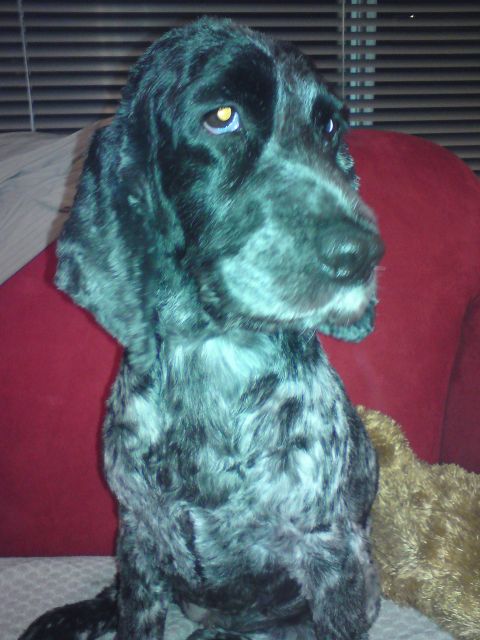 Nervous/depressed cocker spaniel
QuestionSophie
QUESTION: Hi! Sorry if this is a
Nervous/depressed cocker spaniel
QuestionSophie
QUESTION: Hi! Sorry if this is a
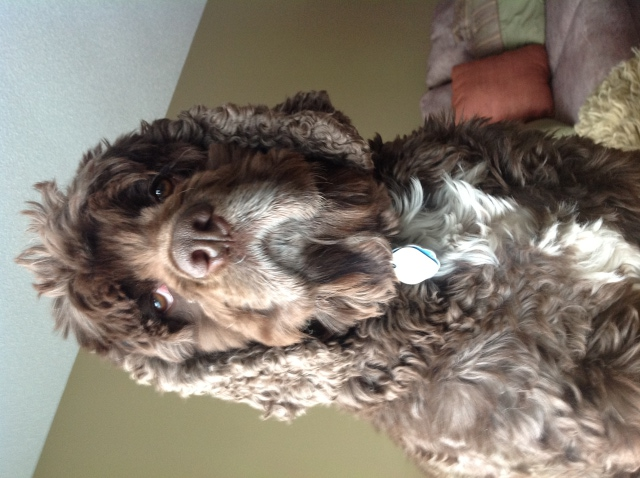 Escalating health issues
QuestionTeddy
QUESTION: First of, thank you much
Escalating health issues
QuestionTeddy
QUESTION: First of, thank you much
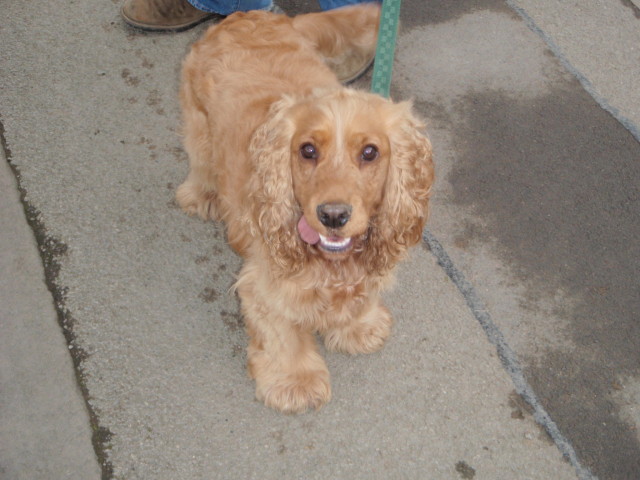 Troublesome Cocker
QuestionQUESTION: Hi Delores
I read through some of yo
Troublesome Cocker
QuestionQUESTION: Hi Delores
I read through some of yo
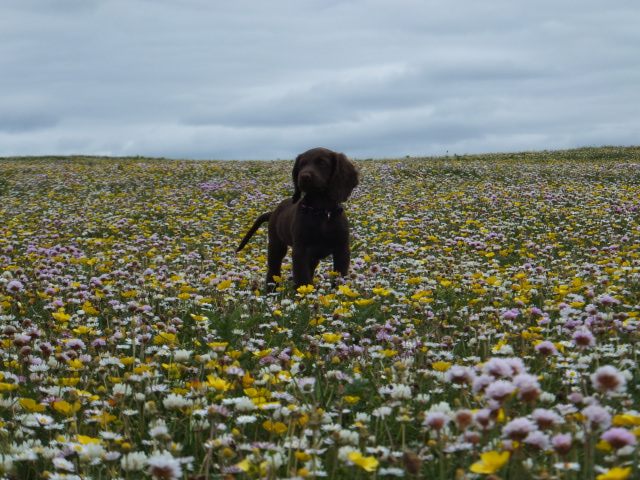 Travelling
QuestionQUESTION: Dear Dolores,
My 7 months old female
Travelling
QuestionQUESTION: Dear Dolores,
My 7 months old female
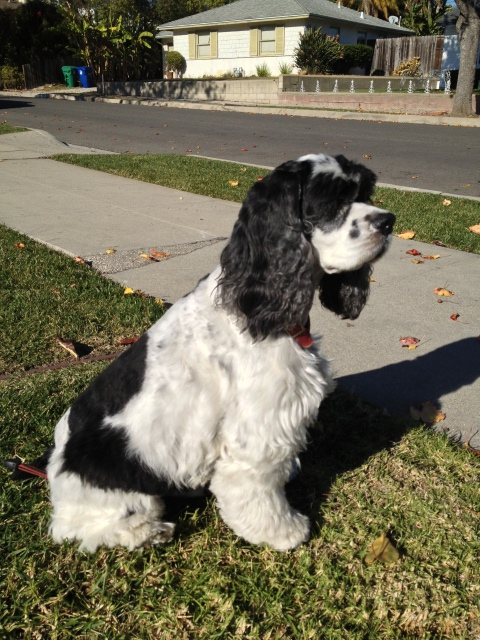 Cocker & Clinging Behavior
QuestionDooley
QUESTION: Dear Dr. Beck,
We have
Cocker & Clinging Behavior
QuestionDooley
QUESTION: Dear Dr. Beck,
We have